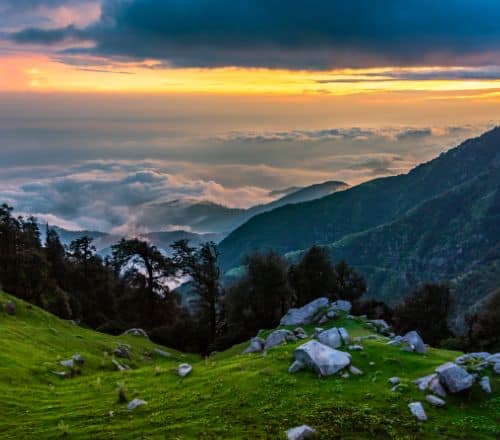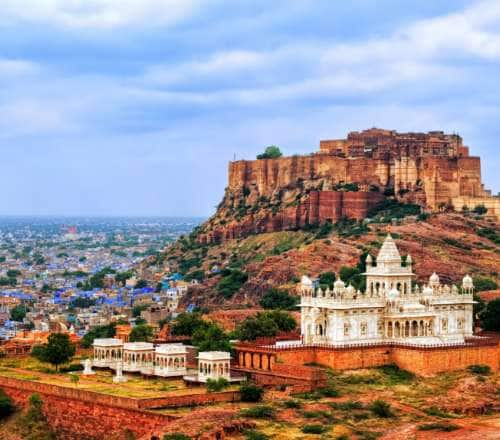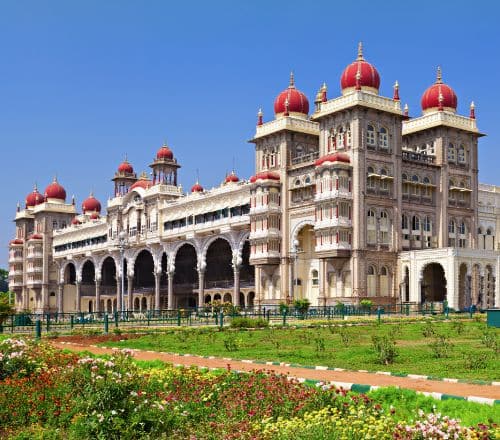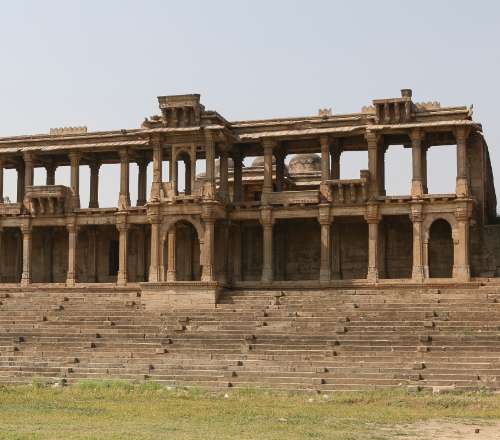Stay logged in to proceed with bookings, orders and offers.
On changing the terminal, you will loose items in your cart. Are you sure you want to change your terminal?
Rann Utsav is a celebration of the life, festivities, and culture of Kutch and Gujarat
I stood on the salty chadar, looking at the endless white stretch. I thanked God twice. The first was for the opportunity to visit the Rann, and the second was for the full moon night I would spend here.
While I waited for the stars, the sun fast approached the horizon. The ball of fire hypnotised me as it changed hues repeatedly until it silently sunk away. The sky turned into a painter’s canvas. The patterns in the sky were a panoramic outburst of colours with various shades of saffron, red, and blue. The sky soon turned dark with the promise of wings for my dreams to land on a beautiful tomorrow.
In the dark, the Rann turned into shining crystals. It was a magical treat to the eyes to experience a sparkling Rann. Then, the air turned frigid, and I had to return without having a romantic tête-à-tête with the full moon. 'Until we meet again,' I bid farewell to the desert.
Rann, which means 'salt marsh,' is a white, cracked, barren land with sparse and thorny vegetation and is one of the most beautiful places on Earth. I visited the Rann of Kutch a few years ago and toured the salt pans. It was an expanse of salt many miles long – the white desert near Dhordo village in Kutch. I had my eyes on this destination for a long time and made my way to the white chadar (sheet) of salt of the Rann as soon as I found the opportunity.
I took a flight from Delhi to Ahmedabad to reach Kutch. The next leg was a 360-kilometre road journey from Ahmedabad to Dhordo. I was delighted at first sight of the salt pans when we crossed into Kutch.
The image of Bollywood legend Amitabh Bachhan standing in the middle of the white desert flashed through my mind. The state's tourism advertisement had Big B inviting travellers from all over the world in his signature baritone: 'Kuch din toh bitao Gujarat main' (Spend some days in Gujarat) and 'Kutch nahi dekha toh kuch nahi dekha (If u haven't seen Kutch, you haven't seen anything).
The Gujarat government organised the Rann Utsav every year to attract tourists. Visitors can stay in specially built tents in the desert. A grand Tent City of approximately 350 air-conditioned and non-air-conditioned tents was set up on the outskirts of the village of Dhordo. The Tent City offered packages at affordable prices for two nights and three days.
As I reached the Tent City, I witnessed a celebration. The streets were filled with the colours from the traditional jewellery and attire of the locals at Kutch. However, my mind was on the white desert, about four kilometres away. The sunset was a long time away. The full moon even farther.
When I reached the gateway to the white desert, I had to stop and stare with my mouth agape at the vision in from of me.
The white desert was unlike anything I had seen before. I had visited the miles-long white chadar of ice on river Zanskar in Ladakh and experienced the yellow chadar of the desert near Jaisalmer in Rajasthan. In contrast, the Rann retained a crude, earthy flair, both charming and accommodating. The salt marsh filled the landscape, presenting breathtaking photo opportunities. It gave birth to a vibrant visual culture that permeated into paintings on huts, clothing, and even cowbells.
The Rann is the largest salt desert in the world. In winter months, it is almost 40 kilometres in length. Though it is deep inside the Kutch region, around 80 kilometres from Bhuj, it is easily accessible. It is an hour-and-a-half drive from Bhuj and a short distance from Dhordo village.
The Rann was once a river bed. When the River Luni dries up in winter, it leaves white salt sediments that create fantastic rock formations. The river originates in the Banni grasslands, which is an oasis for the birds when it is full of water. The annual Rann Utsav is held in winter to celebrate the love, life, and culture of the region.
One should go there in the morning when it is gently waking up. The afternoon sun makes the air merciless and calms it down at sunset. The moon brings an unearthly glow to the desert. Although I wanted to take selfies in company of the moon and the stars, the freezing cold drove me back to civilisation.
Once I had my fill of the white desert, it was time to explore everything else Kutch had to offer. Kutch lies in the westernmost part of India. It has Pakistan on one side and Rajasthan on the other. People here face nature’s extreme in the region's arid climate and marshy land. This has made life challenging for its residents and agriculture. This adverse atmosphere led its residents to create arts and crafts for survival.
The local communities here make rich handicrafts and artworks. The colours they wear stood out amid the expanse of the white desert. Their years of experience created masterpieces worthy of an heirloom collection.
The art and craft of the handicrafts of this region were handed down from generation to generation. Kutch's artworks are traded throughout India and in the overseas market. Their main handicrafts are embroidery of ethnic wear and rustic designs on knick-knacks made of terracotta. These handicrafts stood out among other shops during my visit to Kutch and its adjoining areas, particularly in Dhordo and Hodka.
All gifted artisans here had interesting tales about their families perfecting the craft over centuries. The Rogan art at Nirona piqued my interest the most. Only one family in the world – the Gafurs – practised this art. It is an ancient textile art that originated in Persia. It was brought to Nirona village around 400 years ago. I was mesmerised watching an artist in their element.
The artist skillfully laid thick, shiny paint made of castor oil in intricate designs and patterns on a dark piece of cloth. The paint is made by boiling the oil for two days and later combined with pigments of mineral colour and a binding agent. The Abdul Gafur family in Nirona village has practised the Rogan art for eight generations. The Gafur family has been instrumental in turning this decorative art of Persia into unique and intricate fine artworks.
The villages around Bhuj house were composed mainly of pastoral nomadic and semi-nomadic tribes. They specialised in different forms of art. A trip to the Rann of Kutch is incomplete without visiting one of these villages.
I visited houses in the Banni area which I thought of as living museums of local history and culture depicted in beautiful paintings and etchings. They were called Bhunga houses. Rabari and Harijan women painted these houses as an interpretation of their dreams.
The medium was clay with camel dung made porous by adding water to ensure sufficient plasticity. The designs on mud walls were then made with the clay mixture. Objects such as the mor (peacock), popat (parrot), anghadi (fingers), and vinjno (fan) were fashioned from the mixture on the walls.
The riot of colour sprinkled on the barren white land lingered in my vision weeks after my trip to the Kutch. The Rann festival offered me an excellent opportunity to experience the diverse traditions, generosity, and hospitality of the Kutch people, and I can't wait for my next trip to the white desert.





The Adani One expressly disclaims all liability, direct and indirect, in respect to actions taken or not taken based on any or all the contents of this Blog. The Blog is an opinion of the contributor based on the collation of data from various sources and is provided only for information purpose. Adani One does not canvass, advertise, solicit, invite or induct for any product, merchandise, information, brand or any other materials mentioned in the Blog, nor does it obtain any monetary benefit from the same. Reader is advised to read and apply his/her intellect and discretion in this regard. Any Intellectual Property mentioned in this blog belongs to the rightful owner. We do not intent to claim any interest over the same.